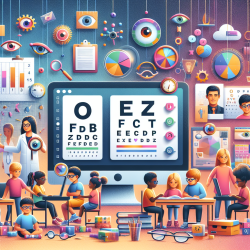Introduction
Autism Spectrum Disorder (ASD) is a neurodevelopmental condition that significantly affects social functioning, communication, and behavior. Early intervention is crucial for mitigating symptoms and enhancing independence later in life. This blog explores the outcomes of a systematic review on ASD screening instruments for very young children, aiming to improve practitioners' skills and encourage further research.
Understanding ASD Screening Instruments
The systematic review analyzed various ASD screening tools for children from the first year of life to 18 months. The research highlighted that while the development of these instruments is in its early stages, they are not yet robust enough for widespread population screening. Instead, they should be used for high-risk children with considerations for individual settings and ongoing research monitoring.
Key Findings
- Instrument Development: The development of ASD screening tools is ongoing and requires further refinement to enhance predictive validity and utility.
- Clinical Recommendations: Practitioners should maintain vigilant developmental and autism surveillance from the first year of life, using screening tools primarily for high-risk children.
- Feasibility and Application: Screening instruments should be applied with consideration for feasibility in individual settings, and caregivers should be informed about the strengths and weaknesses of the tools.
Implications for Practitioners
Practitioners can improve their skills by understanding the current limitations and potential of ASD screening instruments. Engaging in continuous professional development through conferences, publications, and webinars will enhance their ability to apply these tools effectively. Additionally, practitioners should advocate for further research to strengthen the evidence base for these instruments.
Encouraging Further Research
The review emphasizes the need for ongoing research to refine ASD screening instruments. Practitioners are encouraged to contribute to this research by participating in studies, sharing insights from clinical practice, and collaborating with researchers to develop more effective tools.
Conclusion
ASD screening instruments for very young children hold promise but require further development and validation. Practitioners should use these tools judiciously, focusing on high-risk populations and remaining informed about emerging research. By doing so, they can play a crucial role in the early detection and intervention of ASD.
To read the original research paper, please follow this link: Autism Spectrum Disorder Screening Instruments for Very Young Children: A Systematic Review.










